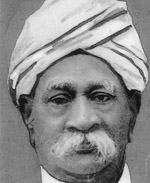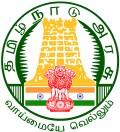| This article is part of a series on the |
| Dravidian politics |
|---|
| Part of a series on |
| Dravidian culture and history |
|---|
 |
| Part of a series on |
| Socialism |
|---|
 |
Dravidian parties include an array of regional political parties in the state of Tamil Nadu, India, which trace their origins and ideologies either directly or indirectly to the Justice Party and the Dravidian movement of C. Natesanar and Periyar E. V. Ramasamy. [1] [2] The Dravidian movement was based on the linguistic divide in India, [3] [4] where most of the Northern Indian, Eastern Indian and Western Indian languages are classified as Indo-Aryan, whereas the South Indian languages are classified as Dravidian. [5] Dravidian politics has developed by associating itself to the Dravidian community. The original goal of Dravidian politics was to achieve social equality, [6] but it later championed the cause of ending the domination of North India over the politics and economy of the South Indian province known as Madras Presidency.
Contents
- Rise of Dravidian politics
- Background
- Early Dravidian politics
- Justice Party era
- Dravidar Kazhagam
- Dravida Munnetra Kazhagam
- Birth of DMK
- Independent Dravida Nadu
- DMK government
- Split in DMK and birth of AIADMK
- M.G.R. and the split from DMK
- AIADMK government
- Further divisions
- Further offshoots of DMK
- Offshoots of AIADMK
- Factions and reunification genealogy of contemporary Dravidian parties
- Dravidian parties in central government
- Ideology
- Dravidianism and Tamilism
- Leftist inclination
- Political use of media
- Newspaper
- Tamil cinema and politics
- Television
- Impact
- Regional
- National
- International
- Electoral symbols of the Dravidian parties
- Flags
- See also
- References
- External links
Most Dravidian parties are offshoots of Dravidar Kazhagam (DK). [1] There are also a few other parties in Tamil Nadu that did not arise from DK directly. Nevertheless, both the former and the latter are considered as Dravidian parties because of the similarities of their ideals and goals. [7] [8] Dravida Munnetra Kazhagam (DMK) and its political rival All India Anna Dravida Munnetra Kazhagam (AIADMK) have been the major players among the Dravidian parties since the mid-1960s. [9] Since the 1967 legislative assembly elections, only the DMK and the AIADMK have formed governments in Tamil Nadu. These two parties are political rivals. [10] Barring political alliances with the DMK or AIADMK, since the 1990s no other political party has won more than a few seats in the Indian parliament or state legislative assembly of Tamil Nadu. Since 1996, members of the DMK and AIADMK have held portfolios in the cabinet of the central Indian government. [11] [12] [13] [14] Another Dravidian party is Marumalarchi Dravida Munnetra Kazhagam.
Political media is pervasive in Dravidian politics, with five of the seven chief ministers from these parties being directly involved in Tamil cinema, either as script writers or actors. Recently television channels owned by these parties have been used for political propaganda purposes. [15]










